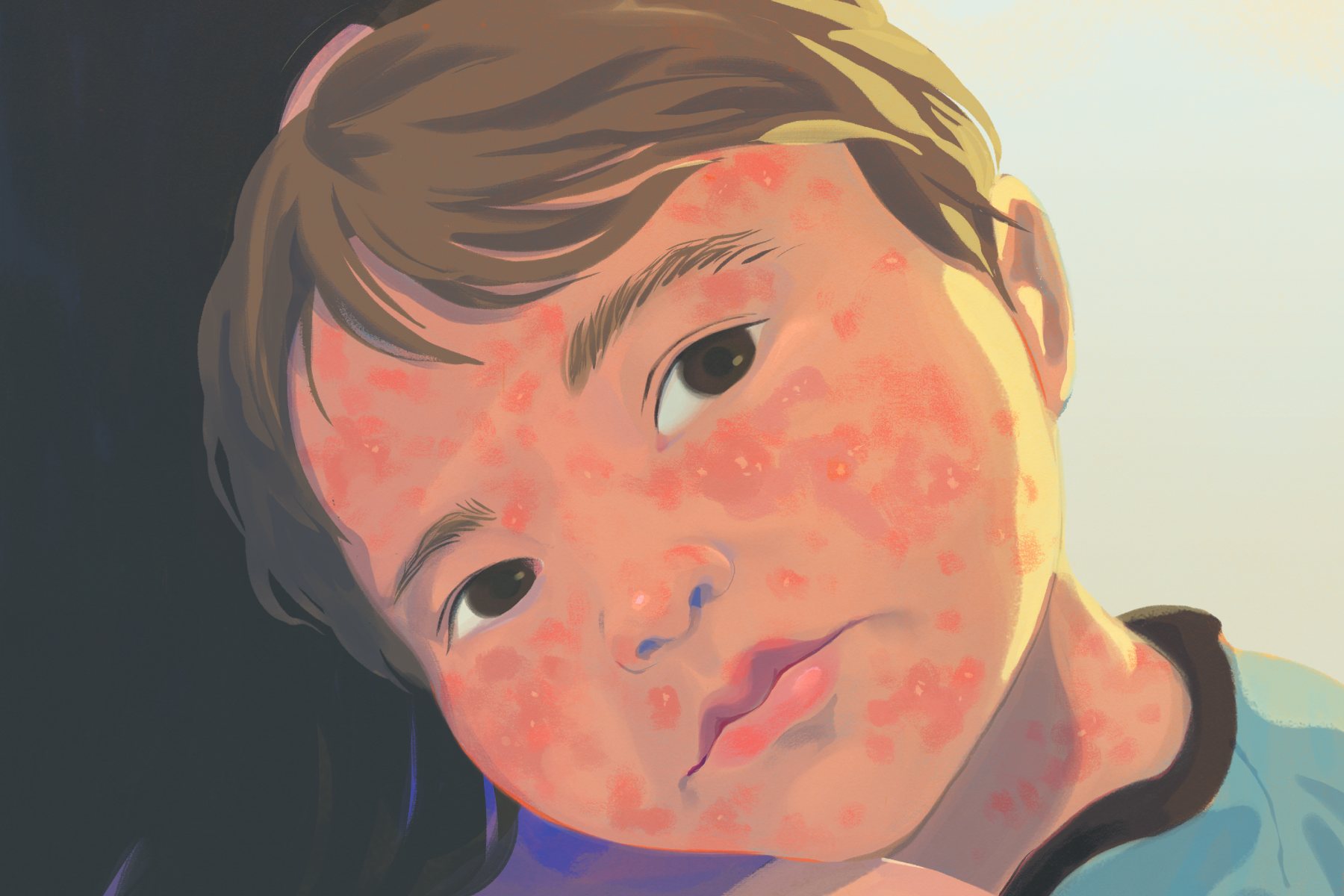By 1998, vaccination rates were already high enough that Canada declared measles eliminated, meaning the virus could still be brought in from abroad but no longer spread within our borders. That happened because a strong majority of people here were immune: when more than 85 percent of people are vaccinated, community-level outbreaks can typically be controlled; if more than 95 percent are vaccinated, few if any measles outbreaks will happen at all.
But over time, vaccination rates began dropping. In 2015, 87 percent of kids in Alberta had received their first dose of the measles vaccine by age two, and 81 percent had received their second dose by age seven; by 2024, those numbers had dropped to 80 and 72 percent respectively—well below the so-called herd immunity rate.
That Alberta’s vaccine uptake reportedly remains among the lowest in Canada is not surprising. The province has become a case study in declining trust in science at the highest levels. Alberta was a hotspot for resistance to vaccines and public health restrictions during the COVID-19 lockdowns of 2020 and 2021. Church services, rodeos, and protests were common here. In July 2021, Health Canada reported that 60 percent of Albertans had received at least one dose of a COVID-19 vaccine. The province was tied with Saskatchewan for second lowest rate in the country, ahead of only Nunavut’s 53 percent; Newfoundland and Labrador led the pack with 73 percent.



Yeah. Like we know how this happened. The question of value is “why did we allow things to get this bad?”